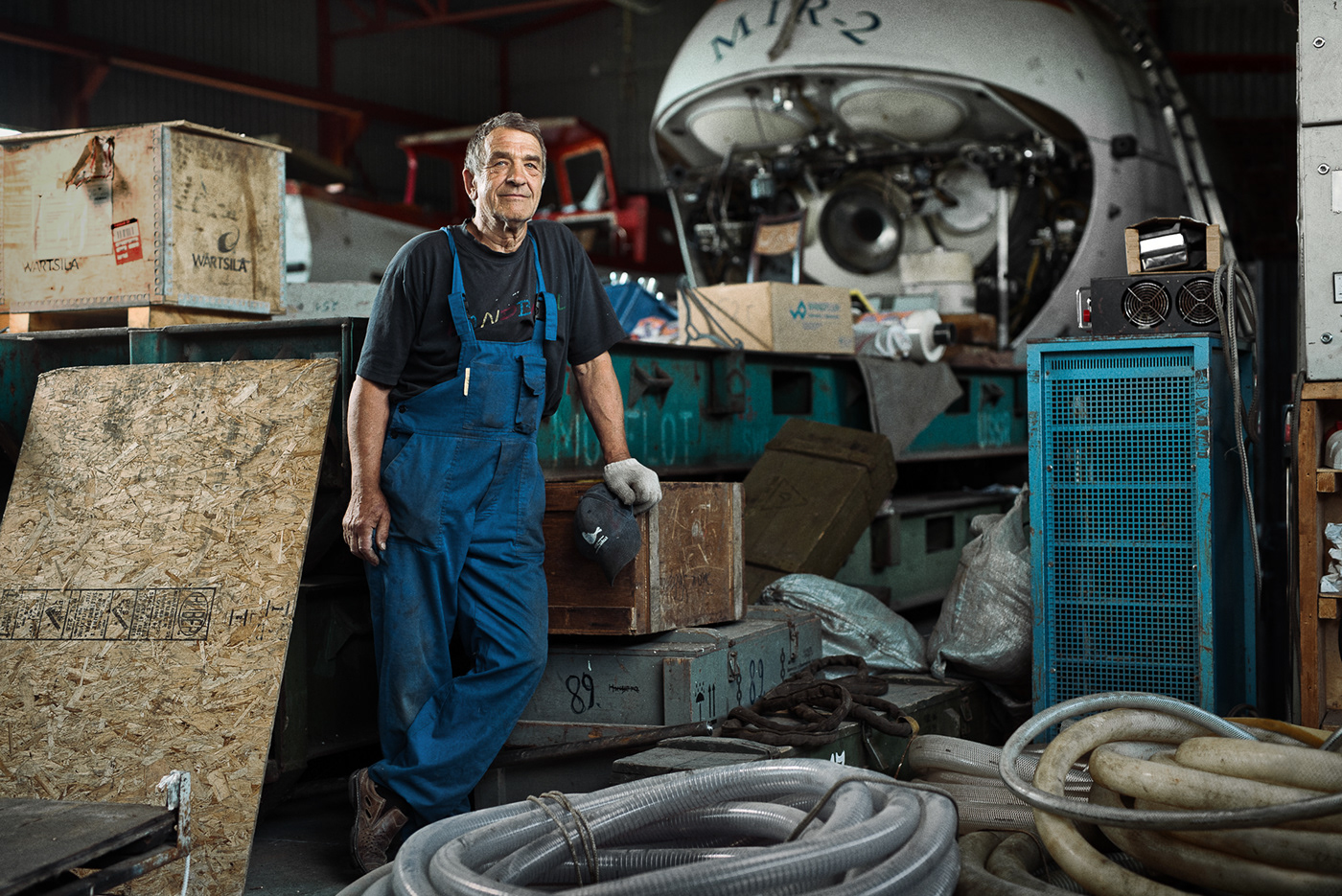
Here is a final chapter about Sergey Smolitsky and deep-sea apparatuses MIR.
MIR-1 and MIR-2 - is two research deep-sea manned submersibles for Oceanographic research. About the complex history of creation, diplomatic grater with the United States and technical characteristics better read on the Internet, and I'll tell you about what is happening with them now.

The team of MIR consists of several subgroups of specialists - hydraulics, acoustics, navigators, mechanics, electricians and electronics.With the beginning of the first commercial dives, and government projects stopped, the standard bundle of crew (pilot, flight engineer and passenger) became too unprofitable to use. Began to take two passengers and the most experienced and trained pilots. Since then, no new pilot has been trained and introduced.


One of the Sergey Smolitsky tasks was to control the life support system of it. One of the biggest projects was the unit "Osmotr", which the created by OKB (Bureau of Oceanological), and there Smolitskiy entirely calculated, drew and build this system, and then control by himself. Coming to the MIR, Smolitsky became a leading specialist in the team, and in the last four expeditions he was the head of the dives.


Production of the Titanic movie was started in September 1995. During the production, Cameron himself curated the process, including controlling the film equipment, which installed on MIR-1, and MIR-2 was used for lighting. The unit in the movie about the Titanic, which is floated next to the ship and which you see on photos is MIR-2.

Vyacheslav Kushnikov is a specialist in hydraulics. At the heart of the MIRs units is the electrical system - all power plants run on batteries. However, almost all drives and manipulators operate from a complex and branched hydraulic system that had to be maintained. Today Vyacheslav definitely the best expert in the world on hydraulic system of the MIR.




Victor Sobol - hydrology and hydrophone specialist, works in the Kaliningrad group with Kushnikov. Since there are usually no engineers among the research scientists in expeditions, Victor during the expeditions was in a group that helped biologists, chemists and geologists to maintain scientific equipment. In addition, Victor Nikolaevich was also engaged in hydroacoustics, on which the entire communication system and the navigation system of the MIRs.
By the way, maybe you didn't know, but Jacques Yves Cousteau was also a sonar.




Peter Ivanovich Perepelyuk - machine operator, fitter, turner and machine operator. The expeditions are constantly need of maintenance, so on the science ship "Keldysh" was a few workshops, which had not just to repair and improve the components of the MIRs, but sometimes to create new equipment on the sh8i.


Now both MIRs stay are in Kaliningrad. MIR-2 in the warehouse of the Institute, and MIR-1 in the Museum of the Ocean. Technical requirements every 10 years is necessary to produce a complete parse of the apparatus with the replacement of plastic parts, batteries, rubber bands and batteries. The last major overhaul was carried out in 2004. Now it was not possible to do this because there is no any goverment money or any commercial projects. Without repair, the MIRs will never get permission to dive.
There have been no more expeditions since 2011.


For today all the world is an active stage of operation of deep-sea drones, so the future of inhabited vehicles is quite ghostly. The main problem is that they are accompanied by very high safety requirements. Less risk is cheaper.
⠀
However, no matter what, there is one very important thing, which value is often neglected - personal impression. This function will always remain for inhabited untis.
⠀
However, no matter what, there is one very important thing, which value is often neglected - personal impression. This function will always remain for inhabited untis.
But most likely as a tourist means.

Humans are too curious creatures to give up such an incredible experience.


